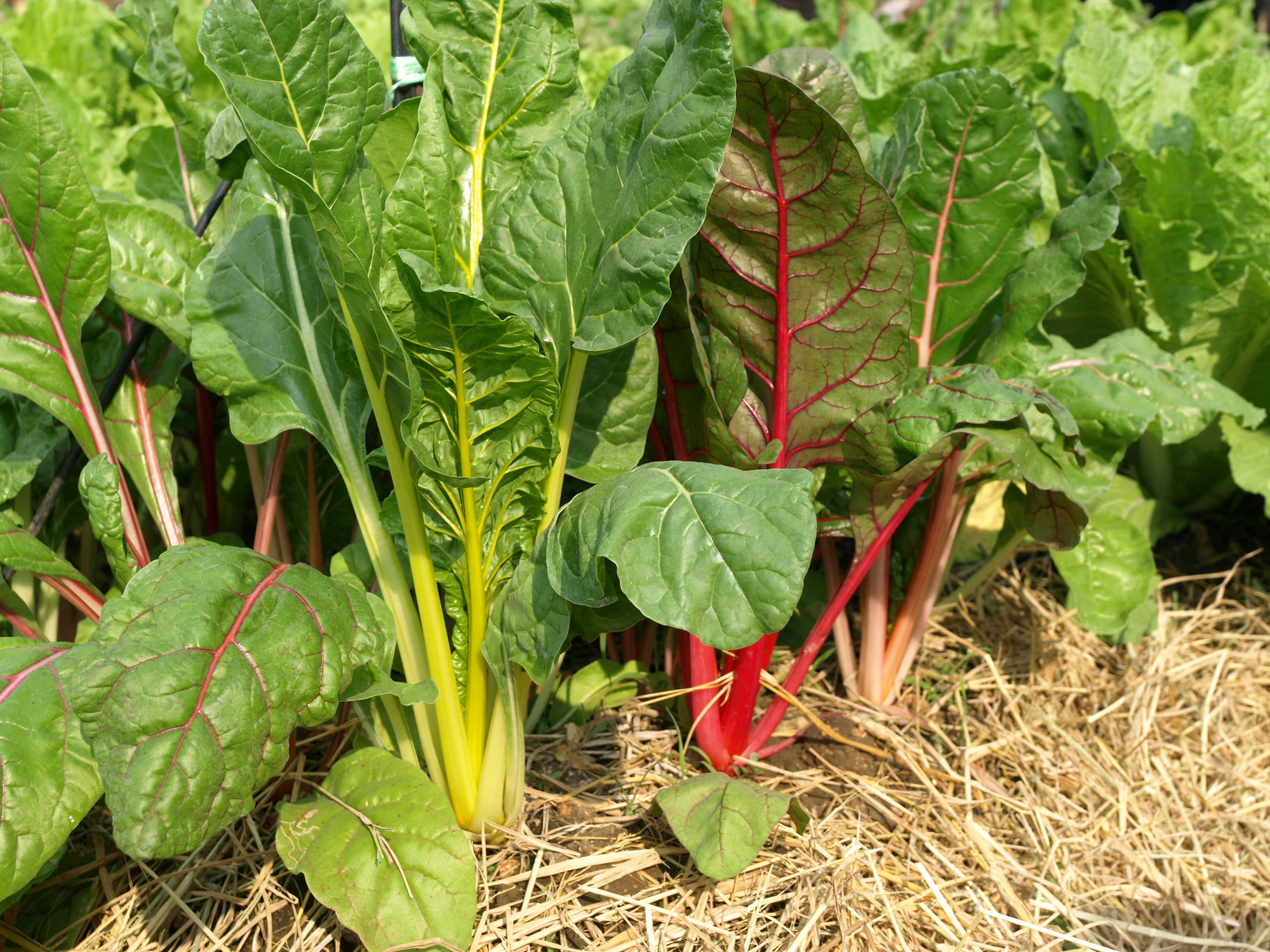Chard Donation Tracker
Quick Links: How & Where to Grow | Temperature | How to Care For | Harvest Signs | Harvesting | Pruning | Pests | Companions | Varieties | Preservation | Recipes | Michigan Tips | Fun Facts
🌱 How & Where to Grow Swiss Chard:
- Direct sow when soil 40°F.
- Succession plant through July – chard thrives in heat when lettuce bolts!
- Space plants 6-12 inches apart in rows 18 inches apart.
- Sunlight: Full sun to partial shade (4-6 hours minimum).
- Soil Type: Rich, well-drained soil with pH 6.0-7.0.
- Soil Amendment: Moderate compost – not as hungry as spinach
Swiss chard is the rainbow of the garden – beautiful, nutritious, and incredibly easy to grow!
🌡️ Temperature Guidance:
Plant at 40°F soil. Thrives in summer heat to 85°F!
- Spring planting: As soon as soil can be worked.
- Heat tolerance: Continues producing through summer.
- Young plants tolerate light frost.
- Mature plants survive 20°F with protection.
Swiss chard bridges the gap between cool-season greens and summer vegetables!
💧 How to Care for:
- Consistent Moisture: Maintains tender leaves.
- Watering: 1-1.5 inches weekly for continuous growth.
- Mulch: 2-3 inches to retain moisture and suppress weeds.
- Fertilizer: Light monthly feeding keeps production high.
- Thinning: Use thinnings in salads!
📏 Harvest Signs:
Baby: 30 days. Mature: 45-60 days. Cut outer leaves first.
- Swiss chard is a cut-and-come-again crop – harvest regularly!
- Baby leaves perfect at 4-6 inches for salads.
- Mature leaves can reach 12-18 inches.
- Stems fully colored when mature.
The more you harvest, the more it produces – don’t be shy!
🧺 Harvesting:
Cut outer leaves at base. Leave center 4-5 leaves. Morning best.
- Always harvest outer leaves first.
- Cut at soil level with knife or scissors.
- Never strip bare – leave growing center.
- Can harvest individual leaves or whole plant.
- Stems and leaves both edible – don’t waste!
✂️ Pruning:
Remove damaged leaves. Cut flower stalks. Rejuvenate old plants.
- Remove yellowing or damaged outer leaves.
- Cut flower stalks immediately if they appear.
- Rejuvenate tired plants by cutting to 3 inches.
- Clean up regularly for disease prevention.
- Summer trim encourages fresh growth.
🪲 Michigan Pests:
Flea beetles, leaf miners, aphids, slugs.
- Leaf miners – create tunnels in leaves. Remove affected leaves.
- Flea beetles – tiny holes in young plants. Row covers help.
- Aphids – occasional problem, blast with water.
- Slugs – love chard! Use beer traps or diatomaceous earth.
🫱🏽🫲🏼 Companions:
Alliums, beans, brassicas, tomatoes. Avoid most herbs, corn.
- Onions and garlic help repel pests.
- Beans fix nitrogen for leafy growth.
- Brassicas share similar growing needs.
- Lettuce grows well in chard’s shade.
- Avoid herbs – many stunt chard growth.
🌈 Varieties:
‘Bright Lights’, ‘Fordhook Giant’, ‘Ruby Red’.
- ‘Bright Lights’: 60 days, rainbow of stem colors.
- ‘Fordhook Giant’: 60 days, white stems, heavy producer.
- ‘Ruby Red’: 59 days, deep red stems, ornamental.
- ‘Lucullus’: 50 days, heirloom, crinkled leaves.
- ‘Peppermint’: 60 days, pink and white striped stems.
🫙 Preservation:
Fresh 1 week. Freeze blanched. Dehydrate. Ferment.
- Fresh storage: Unwashed in plastic bag, 1 week.
- Freezing: Blanch 2 minutes, freeze in portions.
- Separate stems – they need longer blanching.
- Dehydrate: Makes nutritious chips or powder.
- Ferment: Like sauerkraut for probiotics.
- Pickle stems: Beautiful pickled chard stems!
🧑🏽🍳 Recipes:
Sautéed with garlic, white bean soup, chard quesadillas, stem hummus.
- Simple sautéed chard with garlic and lemon.
- White bean and chard soup – hearty comfort food.
- Chard and ricotta stuffed shells.
- Rainbow chard stem hummus – don’t waste those stems!
- Swiss chard gratin with gruyere.
✋🏼 Michigan Tips:
- Plant early and succession plant monthly.
- Thrives through Michigan’s hot, humid summers.
- Fall plantings survive light freezes.
- Grows when spinach and lettuce bolt.
- Rainbow varieties add garden beauty.
- One planting produces for months!
🧠 Fun Facts:
- Not from Switzerland.
- Same species as beets.
- One plant produces pounds of food.
- Actually native to the Mediterranean – “Swiss” was added to distinguish from French chard.
- Chard is basically a beet bred for leaves instead of roots.
- Ancient Greeks and Romans used chard medicinally.
- Aristotle wrote about red chard in 4th century BC.
- Contains 13 different antioxidants!


0 Comments